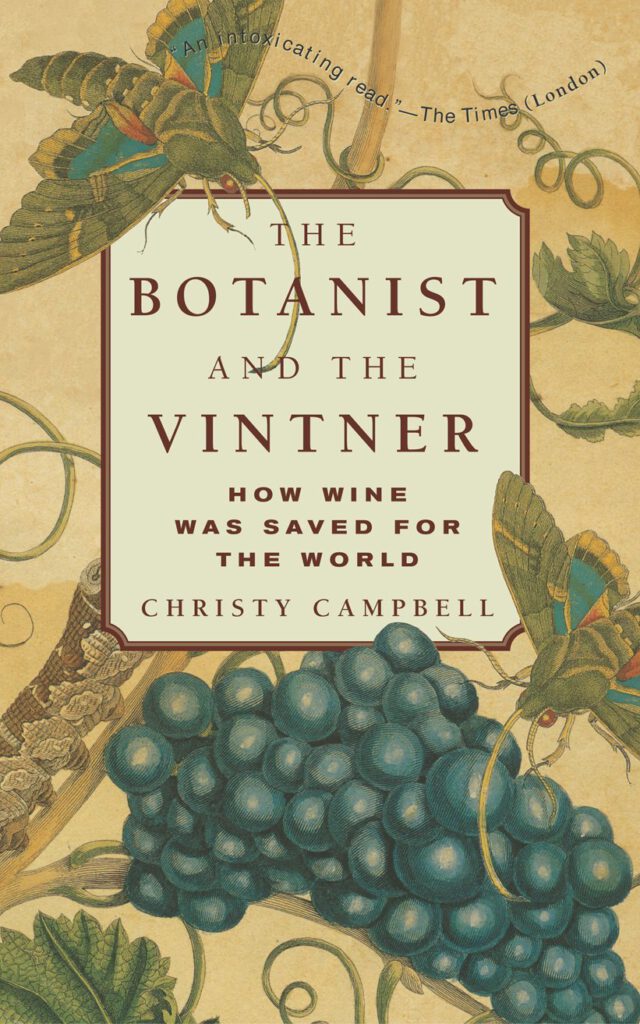
| Title | The Botanist and the Vintner: How Wine Was Saved for the World |
| Author | Christy Campbell |
| Publisher | Algonquin Books (Hachette) |
| Date | March 25, 2005 |
| ISBN | 978-1565124608 (Hardcover) |
| Pages | 320 |
| Excerpt | google.com/books/edition/The_Botanist_and_the_Vintner/9AQ5AQAAIAAd |
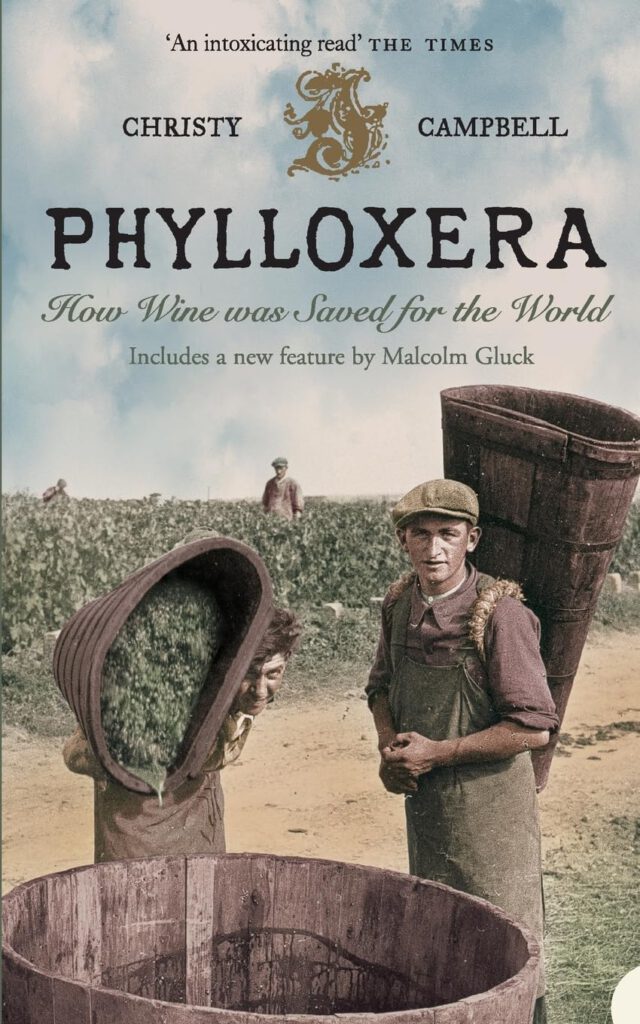
| Title | Phylloxera : How Wine Was Saved for the World |
| Author | Christy Campbell |
| Publisher | HarperCollins Publishers |
| Date | 2004 |
| ISBN | 978-0007115358 (Hardcover) |
| Pages | 314 |
| Excerpt | google.com/books/edition/Phylloxera/IPofAQAAIAAJ |
| Award | Glenfiddich Food & Drink Awards 2005 (Drink) |
About Christy Campbell
Christy (Christopher) Campbell (1951) worked as a defence correspondent and journalist for the Sunday Telegraph.
Phylloxera is his only book on the topic of wine. Other works include Target London – Under Attack from the V-Weapons (2013), Bands of Brigands – The First Men in Tanks (2008), Fenian Fire – he British Government Plot to Assassinate Queen Victoria (2003) and The Maharajah’s Box – An Imperial Story of Conspiracy, Love and a Guru’s Prophecy (2001).
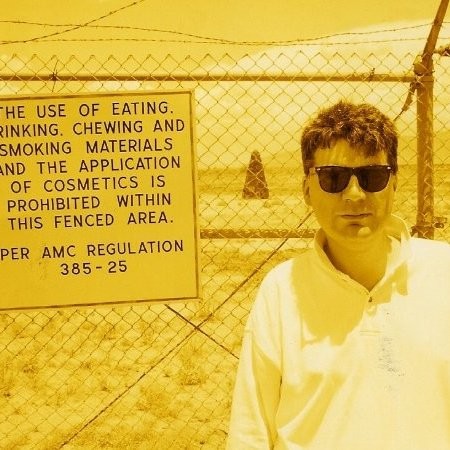
Fleet Street journo who quit to write history books. My intense curiosity and love of stories keeps me at it.
Book Reviews
- The Root of all Evil – An In depth look at Phyloxera by Christy Campbell, Decanter 2004
- How the World’s Vineyards Were Saved by Kim Marcus, Wine Spectator 2005 – This generally well-written and laboriously researched book (…) serves as a fascinating case study of how an ecological disaster was successfully addressed by the nascent industrial/scientific complex of the European West, with consequences that echo to this day.
- When Bugs Declared Total War on Wine by William Grimes, New York Times 2005 – Imagine a world with no Champagne, no Bordeaux, no Burgundy. No French wine at all, in fact. It almost happened. Even worse, it was all our fault. Campbell (…) gives a taut, suspense-filled account of this calamity, and the frantic efforts by botanists and winemakers to reverse it.
- Book Review: The Botanist and the Vintner Vinography 2008 – A single glance at the bibliography and footnotes of Campbell’s impeccably researched book demonstrates the sheer accomplishment this narrative represents. For no other reason than the author’s ability to puzzle out the precise sequence of events that began with a parcel of just a few American grapevines planted in the backyard of a French nursery and ends four decades later with a scene of devastation worthy of Hollywood’s best, the book would be a triumph of scholarship.
References
- en.wikipedia.org/wiki/Great_French_Wine_Blight
- en.wikipedia.org/wiki/Phylloxera
- fr.wikipedia.org/wiki/Phyllox%C3%A9ra
- L’Invasion du vignoble par le Phylloxéra, Jean-Paul Legros, Académie des Sciences et Lettres de Montpellier, 1993
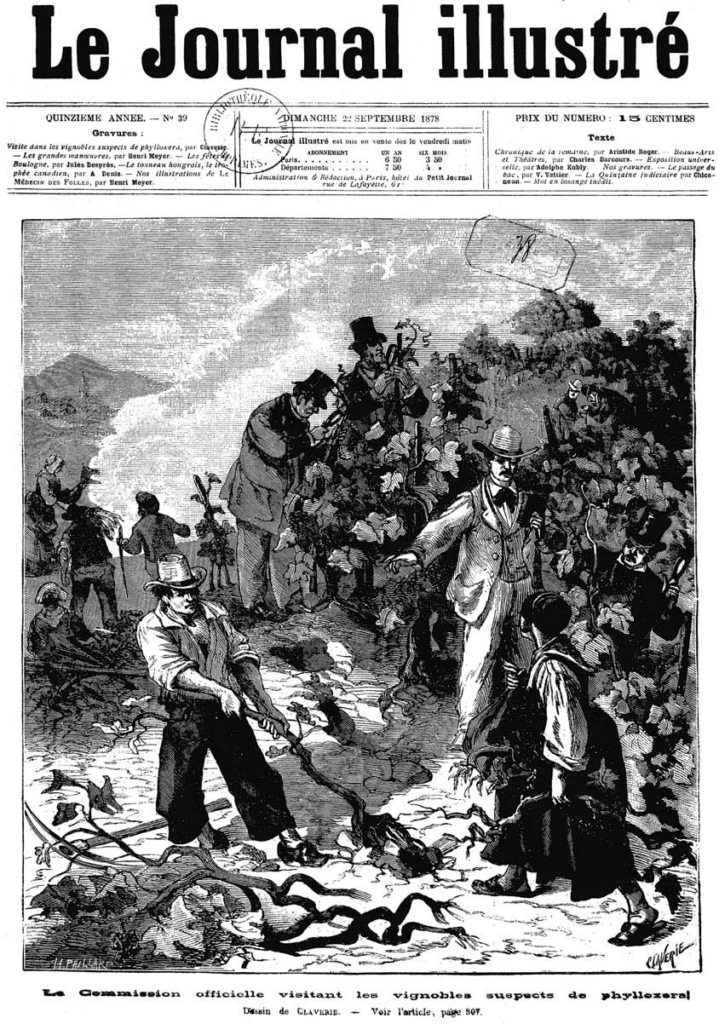
Le Clos Borty
As described in the book – In 1862, Monsieur Joseph Antoine Borty, wine merchant and vigneron in Roquemaure received a gift from a Mr. Carle from New York, a collection of different American vine varieties, which he planted in the “clos” behind his house. Next year, a cluster of vines in nearby Pujaut (les Plaines) began to show curious symptoms; the leaves dried up and dropped. In 1864 all the vines on the plain died. The first mention of the disease in in 1867; the discover of its cause and the name date from 1868 by professor Planchon (Ancien Greek: φύλλον + ξηρός: leaf + dry)
The Clos Borty was located in 21, rue Longue (now Placide Cappeau), Roquemaure. The plains are just to the south (Les Plaines, Pujaut).

About the discovery, see also
- La découverte du Phylloxéra en France : un sujet de polémique. Les archieves parlent – par Yves Carton, 2006
- en.wikipedia.org/wiki/Jules_%C3%89mile_Planchon
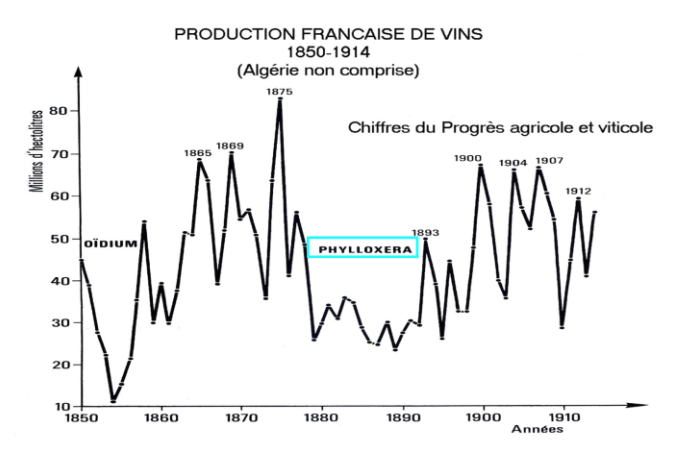

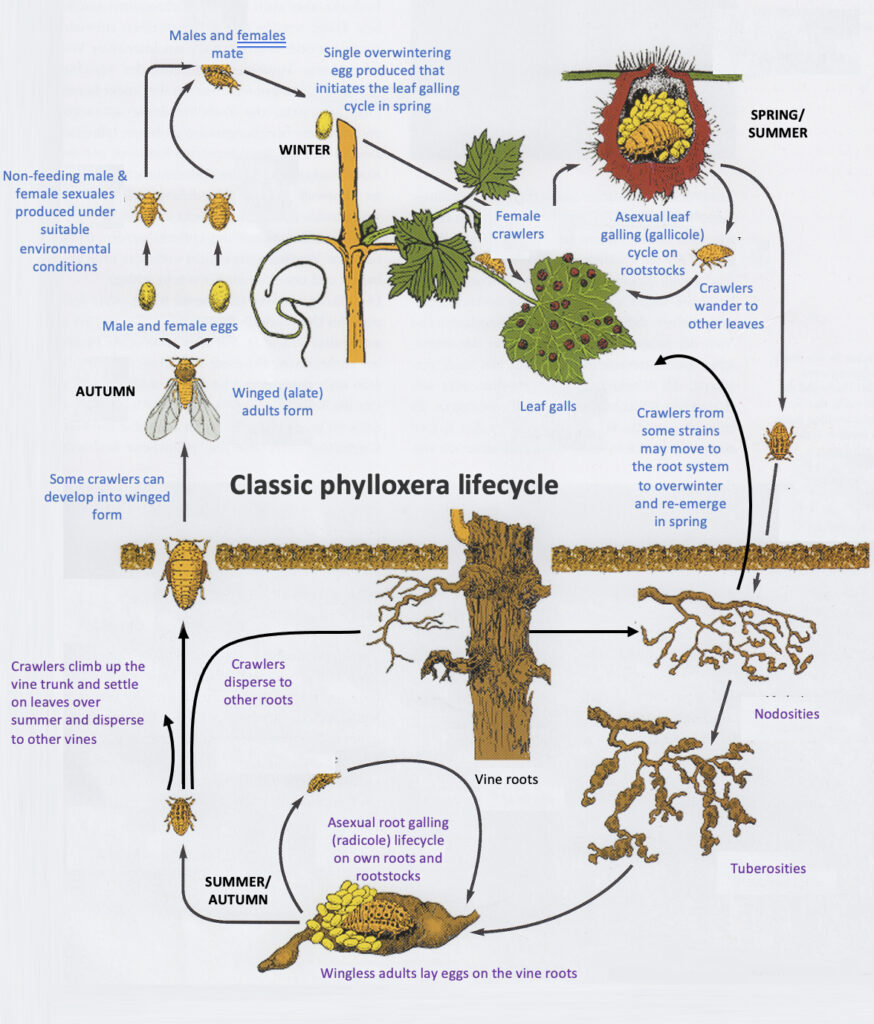
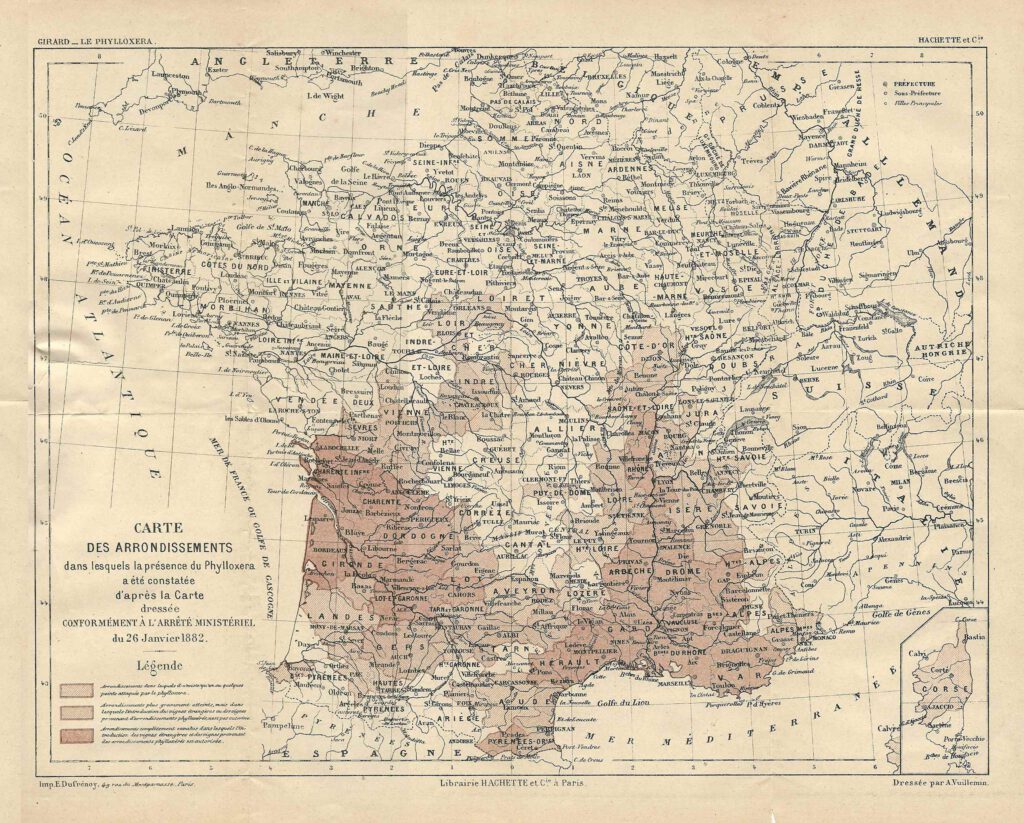
Les Taches de Roquemaure & La Fête des Amoureux
Roquemaure celebrates each year since 1868 la Fête des Amoureux.
Cette année là, un riche propriétaire viticole a ramené de Rome, les reliques de ce saint protecteur dans l’espoir de rendre Santé et Vigueur aux vignobles du pays, touchés par une terrible maladie de la vigne, appelée le Phylloxera.
- www.roquemaure.fr/lhistoire
- www.saintvalentin.org/origines
- www.chateaudeclary.com/lhistoire/le-miracle-de-st-valentin-une-histoire-damour-a-clary
- www.grandavignon-destinations.fr/temps-fort/la-fete-des-amoureux-a-roquemaure
Francs de Pied
Francs de pieds are ungrafted vines, which are still to be found in Europe (and elsewhere).
South Australia, Western Australia, Northern Territory and Tasmania are designated ‘phylloxera-free’.
So are the vineyards in Chile and, for the most part, in Argentina, Washington State and, to a lesser extent, in the Mosel (Germany) and Central Otago (New Zealand), plus some smaller (mostly sandy) areas, like Colares in Portugal or even isolated vineyards like Bollinger’s Clos St. Jacques in Aÿ.
- www.wine-searcher.com/regions-colares
- www.champagne-bollinger.com/en/the-collection/vieilles-vignes-francaises/
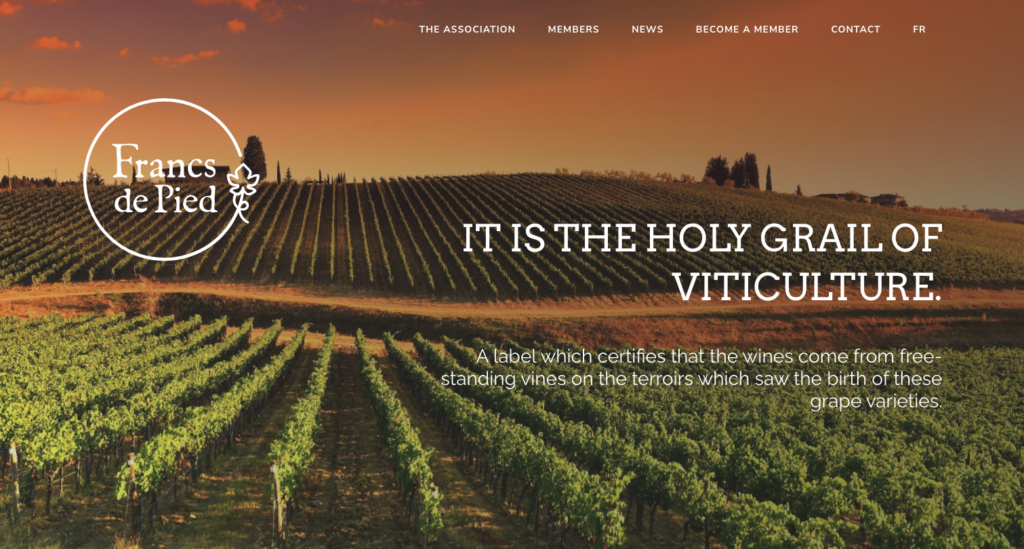

Comments
2 responses to “Book Notes: Christy Campbell – Phylloxera (2004) / The Botanist and the Vintner (2005)”
[…] Book Notes: Christy Campbell – Phylloxera (2004) / The Botanist and the Vintner (2005) […]
[…] Christy Campbell, The Botanist and the Vintner: How Wine Was Saved for the World, Algonquin Books of… […]